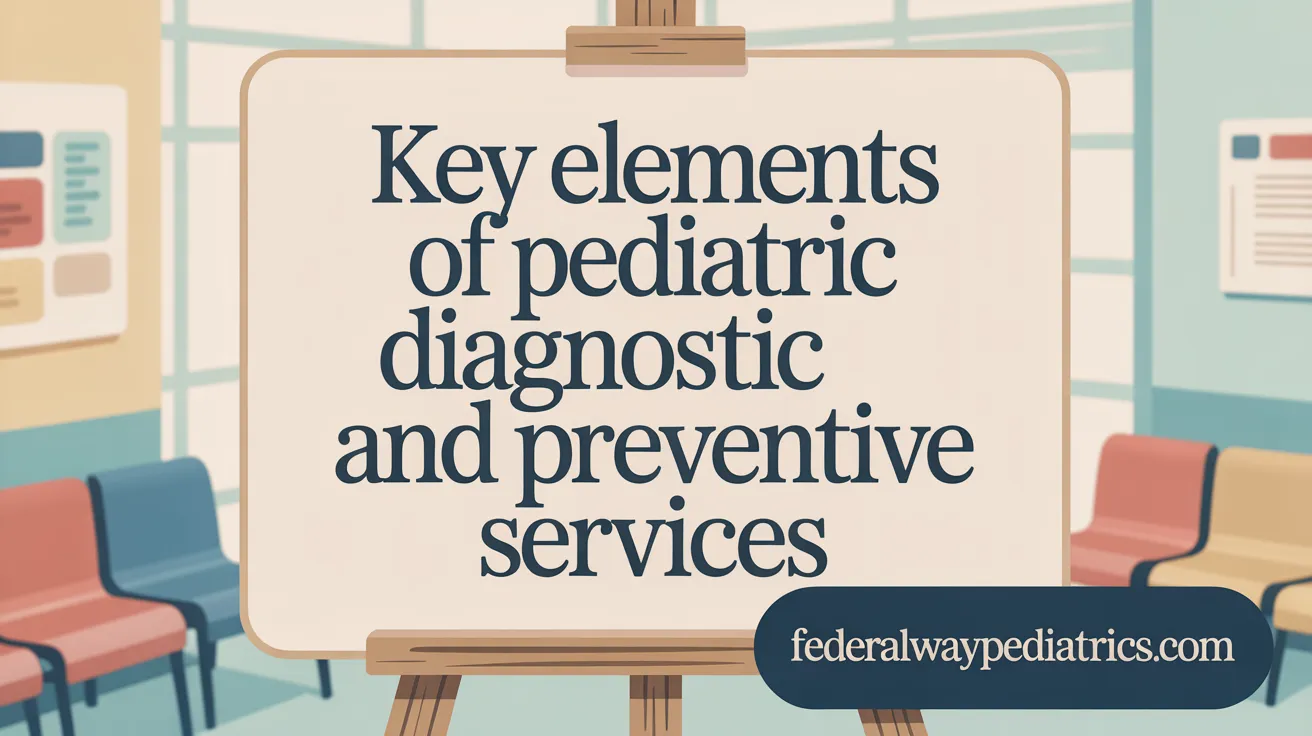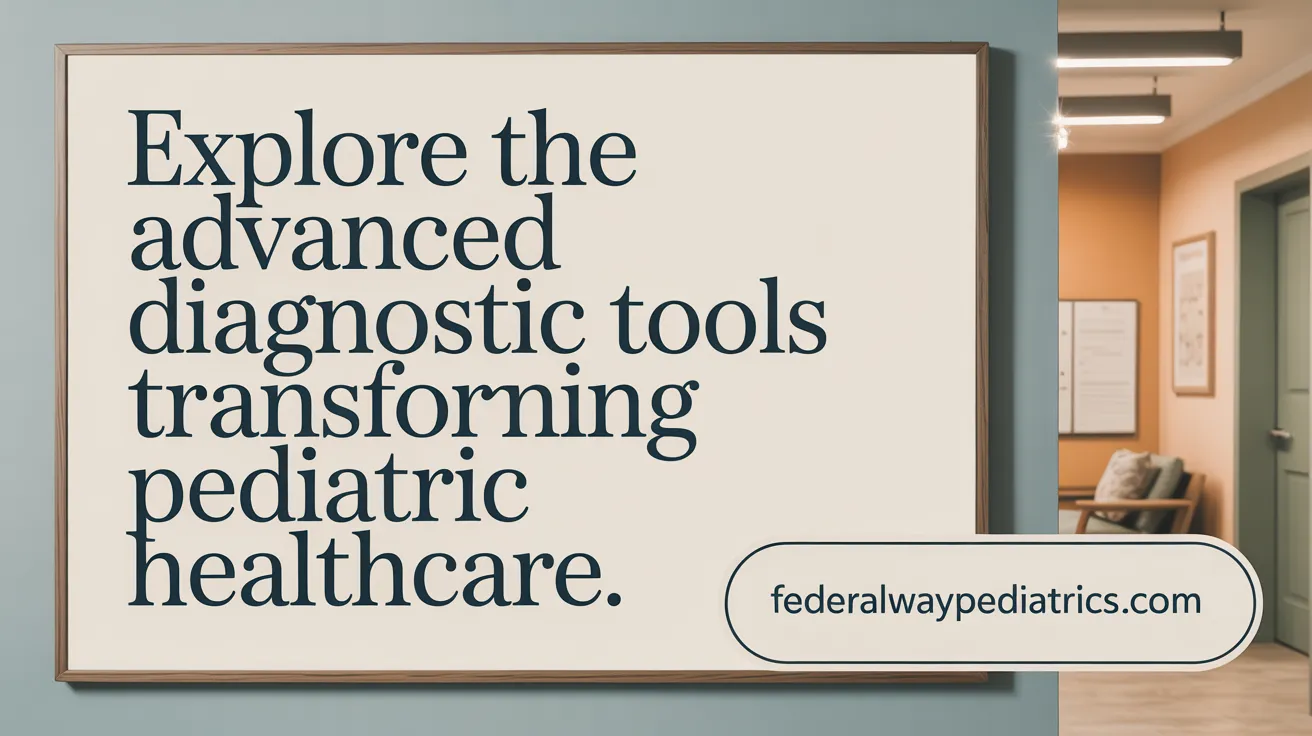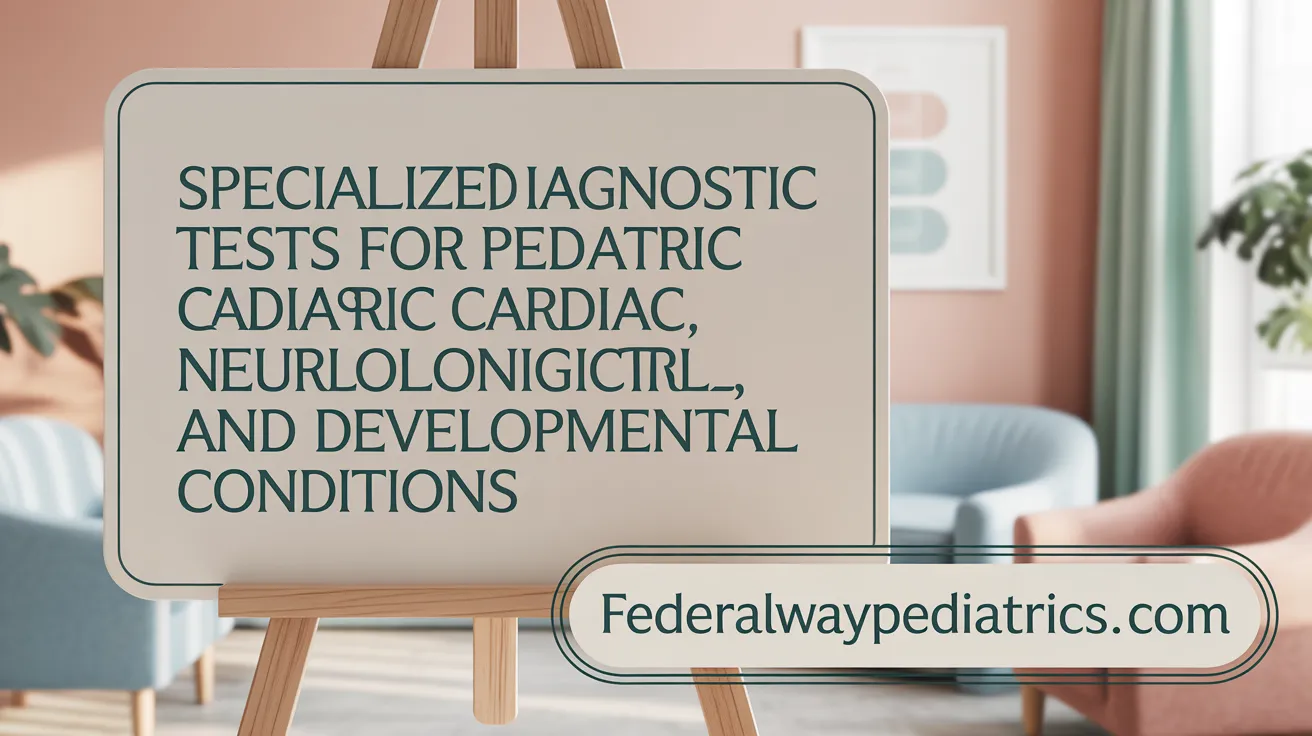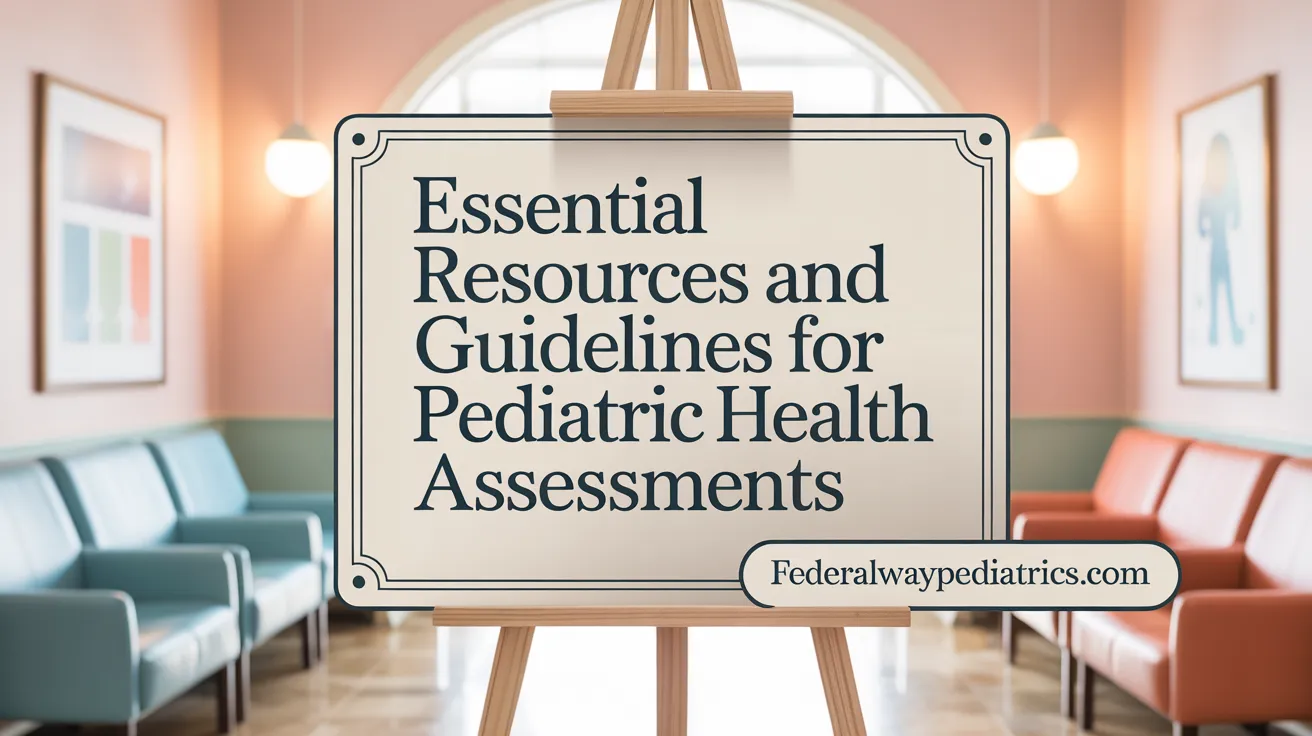Understanding Pediatric Diagnostic Services
Pediatric diagnostic services are essential pillars in the early detection, accurate diagnosis, and effective management of health concerns in children and adolescents. These services integrate preventive screenings, advanced diagnostic technologies, and specialized evaluations tailored to the unique physiological and developmental needs of young patients. This article explores the components, methods, and importance of comprehensive pediatric diagnostic care, empowering parents, healthcare providers, and policymakers to foster healthier futures for children.
Core Components of Pediatric Diagnostic Services and Preventive Care

What are the primary components of pediatric diagnostic services?
Pediatric diagnostic services consist of various advanced evaluation tools that help identify health issues in children. These include imaging techniques like X-rays, ultrasounds, MRI, CT scans, and nuclear medicine, which provide internal views necessary for accurate diagnosis. Alongside imaging, comprehensive diagnostic evaluations incorporate developmental and behavioral screenings, laboratory testing, and clinical assessments that monitor growth, development, and early signs of illness. Interventional radiology offers minimally invasive procedures such as biopsies, angiograms, and vascular interventions guided by imaging. Preventive services are integral, emphasizing routine wellness visits that include screenings for vision, hearing, lead exposure, and other health risks. Collectively, these components enable early diagnosis, tailored interventions, and ongoing health assessments tailored specifically to children's needs.
What health screenings and preventive care services are essential for children?
Essential screenings and preventive care for children focus on early detection and health maintenance. Regular immunizations—a critical cornerstone—cover vaccines like measles, mumps, rubella, hepatitis, HPV, influenza, and more. Developmental and behavioral screenings, including autism assessments, are recommended at specific ages to identify developmental delays or behavioral concerns early on. Screening for vision and hearing, blood pressure, and growth parameters like height, weight, and BMI support overall health monitoring.
Newborn screenings are especially vital, testing for conditions such as phenylketonuria (PKU), hypothyroidism, hemoglobinopathies, and lead poisoning. These early interventions significantly improve health outcomes. Preventive services also encompass oral health assessments and fluoride treatments, STI screenings, obesity counseling, and iron deficiency screening for at-risk populations. Most health plans, including Medicaid preventive pediatric health care, are mandated to cover these preventive services, enabling widespread early detection and intervention.
Why are well-child visits important, and how should they be scheduled?
Well-child visits are essential for ongoing health surveillance, emphasizing the child's physical growth, developmental progress, and emotional well-being. These visits provide opportunities for immunizations, developmental and behavioral screenings, and health education on nutrition, safety, and injury prevention. Scheduling follows guidelines from the American Academy of Pediatrics, starting shortly after birth—typically within the first week—and continuing at specified intervals throughout childhood and adolescence. Early and regular visits ensure timely catch-up on vaccinations, monitor growth milestones, and facilitate early detection of health issues. Consistent well-child checkups foster a strong partnership between families and health care providers, supporting optimal health and development for every child.
More information can be found by searching for 'components of pediatric diagnostic and preventive care services' to explore current guidelines and best practices.
Diagnostic Technologies and Methods in Pediatric Healthcare

Which diagnostic methods and procedures are commonly used in pediatric healthcare?
Pediatric healthcare relies on a variety of diagnostic methods to accurately identify children’s health issues while ensuring comfort and safety. Common procedures include laboratory tests like blood work, allergy skin testing, and genetic analyses, which help diagnose infections, allergies, metabolic disorders, and genetic conditions. You can learn more about All pediatric diagnostic tests and Diagnostic tests for children.
Imaging techniques are also extensively used. X-rays and ultrasounds provide internal images with minimal risk, while MRI and CT scans produce detailed cross-sectional views of soft tissues and organs. Specialized procedures like echocardiography examine heart structure and function, often performed in high volumes to support pediatric cardiology. For further detail, see Angiogram, CT scan, X-ray imaging and other diagnostic procedures and Pediatric Radiology tests and procedures.
Other significant procedures include Holter monitors and pulse oximetry for assessing heart rhythms and oxygen levels, and fluoroscopy and interventional radiology enable real-time imaging and minimally invasive interventions for complex conditions. Neurodiagnostic tools like EEGs and autism-specific evaluations help detect neurological and developmental issues. More about these can be found at Advanced diagnostics in pediatric neurology and Developmental-Behavioral Pediatrics at CHLA.
Renowned medical centers like University Hospitals employ these advanced, child-friendly diagnostic tools, often in multidisciplinary teams. Techniques like sedation, distraction, and a reassuring environment help minimize discomfort, aiming to make diagnostic procedures as stress-free as possible for young patients. Visit On-Site Pediatric Diagnostic Testing and Pediatric Diagnostic Program at Boston Children's Hospital for relevant information.
What are some key pediatric diagnostic technologies, such as pediatric radiology and laboratory testing, used in children's health assessments?
Core pediatric diagnostic technologies include a range of specialized imaging and laboratory tools. Pediatric radiology is characterized by equipment designed for children, including digital X-rays, ultrasound devices, MRI machines, and CT scanners. These technologies facilitate diagnosis of congenital anomalies, injuries, infections, and chronic conditions. Read more at Pediatric Radiology and Medical Tests A-Z.
To reduce radiation exposure, radiology departments follow safety principles such as ALARA (As Low As Reasonably Achievable) and use child-sized equipment, sedation protocols, and distraction techniques to ease young patients.
Laboratory testing encompasses blood analyses like complete blood counts, metabolic panels, lipid profiles, and allergy testing, helping to evaluate infections, nutritional status, immune function, and metabolic disorders. Urinalysis and genetic testing further support comprehensive health assessments. For details, see Common Pediatric Lab Tests, Why blood tests are important for children, and Pediatric Diagnostic Tests.
Advanced imaging methods like nuclear medicine, PET scans, and SPECT provide insight into organ function and cellular activity, aiding in cancer diagnosis and treatment planning. Further information can be found at Pediatric Radiology tests and procedures.
Overall, the integration of these technologies within pediatric care ensures precise diagnosis while prioritizing safety and minimizing distress.
How do child-friendly diagnostic environments and techniques enhance the experience for pediatric patients?
Creating a supportive diagnostic environment is vital in pediatric healthcare. Child-friendly facilities are designed with colorful decor, entertainment, and comfort items to reduce fear and anxiety. Staff are trained in gentle communication and distraction techniques, such as toys, videos, or virtual reality, to keep children calm during procedures. Preparation efforts include explaining procedures in simple terms, involving parents, and using mock devices for familiarization. Sedation is used only when necessary, following strict safety protocols.
These practices foster cooperation, improve diagnostic accuracy, and lessen emotional trauma. Hospitals like Loyola Medicine use child-centered environments for tests like ultrasounds, EEGs, and MRIs, effectively reducing the need for sedation.
Incorporating patient-oriented strategies and technological innovations, such as faster imaging and non-invasive tests, ensures that pediatric diagnosis supports children’s physical and emotional well-being, promoting positive healthcare experiences. Learn more about Pediatric Diagnostic Program and Child Development Diagnostic Tests and Screenings.
Diagnostic Tests and Evaluations for Specific Pediatric Conditions

What diagnostic tests and evaluations are used for specific pediatric conditions such as cardiac, neurological, behavioral, and developmental issues?
Pediatric health concerns often require specialized assessments to accurately diagnose and guide treatment. For cardiac conditions, echocardiograms stand as the primary diagnostic tool, offering detailed images of the heart's structure and function. Fetal ultrasounds and pulse oximetry are used early on to detect congenital heart defects, while cardiac catheterization may be necessary for detailed internal evaluation or intervention.
In neurological disorders, imaging and functional tests are vital. Magnetic Resonance Imaging (MRI) provides detailed inside views of the brain and spinal cord, enabling detection of structural abnormalities or lesions. Electroencephalograms (EEG) are essential for monitoring electrical activity, especially in epilepsy. Evoked potentials and electromyography (EMG) assess nerve and muscle function, while lumbar punctures may be conducted to analyze cerebrospinal fluid. Sleep studies, such as polysomnography, help evaluate sleep disorders common in children with neurological concerns.
Behavioral and developmental issues are addressed through a variety of screening tools. The Ages and Stages Questionnaires (ASQ-3) and Bayley Scales are widely used to evaluate motor skills, language development, and cognitive functioning. For children at higher risk, such as those with congenital heart disease, systematic screening involves checking developmental milestones concerning movement, speech, and social interactions. Genetic testing also plays a significant role in identifying underlying syndromes or risks that contribute to behavioral or developmental challenges. More on this can be found at the Child Development Diagnostic Tests and Screenings resource.
The assessment process often involves a multidisciplinary team, including pediatricians, neurologists, cardiologists, psychologists, speech-language pathologists, and genetic counselors. These professionals work together, conducting age-appropriate evaluations, performing targeted diagnostic tests, and sharing insights to establish comprehensive diagnoses. Regular collaboration ensures early detection, continuous monitoring, and developmentally appropriate intervention plans, ultimately improving health and developmental outcomes in pediatric patients.
More information on diagnostic evaluations for pediatric cardiac, neurological, developmental, and behavioral conditions can be found by searching for "diagnostic evaluations for pediatric cardiac neurological developmental behavioral conditions." This approach highlights the importance of specialized testing and multidisciplinary teamwork in pediatric healthcare.
Early Detection and Management: Transforming Pediatric Health Outcomes

How can early detection, diagnosis, and management impact pediatric illnesses and health concerns?
Early detection and timely intervention play a crucial role in improving health outcomes for children. When pediatric health issues are identified early, before symptoms fully develop or worsen, healthcare providers can implement strategies that prevent disease progression and reduce the risk of complications. For example, newborn screening programs and developmental assessments help catch congenital conditions, learning delays, or infectious diseases at stages where treatments are most effective.
Modern screening technologies, such as blood tests for lead poisoning, hearing and vision screenings, and advanced imaging tests like MRI and CT scans, support early diagnosis. These tools are complemented by innovations like machine learning algorithms and digital health platforms, which enhance diagnostic accuracy and expand access to care. As a result, conditions such as asthma, obesity, or behavioral disorders can be managed proactively.
Timely management isn't just about treating the illness; it's about tailored care plans that include medical interventions, behavioral therapy, nutritional support, and family education. For example, early intervention for developmental delays can significantly improve speech, motor skills, and social behaviors, allowing children to reach their full potential (ECHO program for developmental disabilities).
The benefits of early action extend beyond health. It reduces emergency hospitalizations, lowers long-term healthcare costs, and improves quality of life for children and their families. Because many pediatric diseases are more manageable when caught early, investing in comprehensive screening and swift care pathways can lead to healthier, more resilient children and a brighter future for pediatric healthcare.
Empowering Through Knowledge: Resources for Pediatric Health Assessments and Diagnostics
 Accessible and up-to-date resources are crucial for supporting parents, healthcare providers, and policymakers in delivering comprehensive pediatric health assessments and diagnostic services. Prominent organizations such as the American Academy of Pediatrics (AAP) and Bright Futures provide detailed guidelines and periodicity schedules that outline age-specific screening, developmental assessments, vaccination protocols, and health guidance. The Bright Futures Guidelines serve as a foundational document, offering evidence-based recommendations that promote early detection and preventive care throughout childhood.
Accessible and up-to-date resources are crucial for supporting parents, healthcare providers, and policymakers in delivering comprehensive pediatric health assessments and diagnostic services. Prominent organizations such as the American Academy of Pediatrics (AAP) and Bright Futures provide detailed guidelines and periodicity schedules that outline age-specific screening, developmental assessments, vaccination protocols, and health guidance. The Bright Futures Guidelines serve as a foundational document, offering evidence-based recommendations that promote early detection and preventive care throughout childhood.
For clinicians and healthcare teams, medical online platforms like AccessPediatrics and Pediatric Care Online offer regularly revised protocols, clinical updates, and diagnostic tools covering conditions from infectious diseases to developmental disorders like autism and ADHD. These digital resources include decision-support modules and treatment algorithms that foster consistency and accuracy in pediatric diagnosis.
Supporting early intervention, specialized toolkits, and modules are available to assist in screening for behavioral health, mental health, and neurodevelopmental conditions. These tools facilitate the timely identification of at-risk children and guide appropriate referral and management pathways, such as the Developmental and Behavioral Screening Tests and services from the Echo Program for Developmental Disabilities.
Policymakers and public health officials benefit from policy frameworks and evidence summaries found in peer-reviewed medical journals and official health department publications such as the Early and Periodic Screening Diagnostic and Treatment (EPSDT) program and the New Mexico Department of Health EPSDT services. These resources help shape effective health policies, improve screening access, and optimize resource allocation.
Collectively, these resources empower caregivers and providers to implement early detection strategies, promote preventive health, and ensure children receive timely, appropriate diagnostics and treatment services. To find these resources, a simple search for 'pediatric health assessment guidelines and resources' will lead to a wealth of authoritative and current information designed to improve pediatric healthcare outcomes.
Moving Forward with Comprehensive Pediatric Diagnostics
The comprehensive framework of pediatric diagnostic services plays a pivotal role in safeguarding children's health by enabling timely detection and management of diverse medical, developmental, and behavioral conditions. Advances in diagnostic technologies combined with established screening protocols and specialized assessments empower healthcare providers to offer precise, child-centered care. Equally important are well-structured preventive care programs and well-child visits that support early intervention and promote healthy development. Access to authoritative resources and guidelines further strengthens the collective efforts of families, clinicians, and policymakers in enhancing pediatric health outcomes. Embracing a collaborative and informed approach to pediatric diagnostics ultimately paves the way for healthier futures and optimizes the lifelong well-being of children around the globe.
